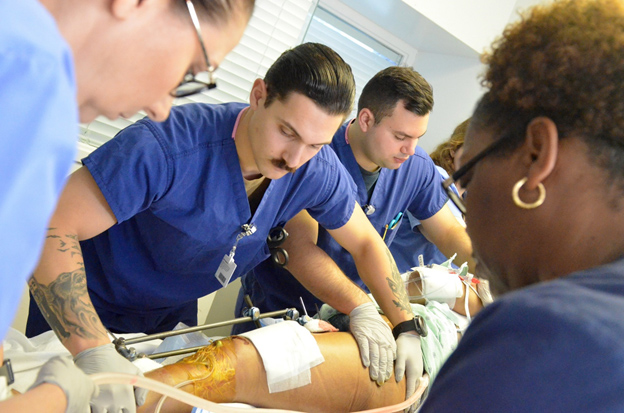Combat-related blast injuries frequently include trauma to the extremities. Service members who develop infections of these injury sites have a greater risk of developing subsequent infections (McDonald et al., 2018), and have lower return to duty rates (Napierala et al., 2014) than those who do not develop infections. A better understanding of the factors that influence infection onset is needed to ensure approaches for treating extremity trauma mitigate the risk of infection.
Researchers participating in the Department of Defense - Department of Veterans Affairs Trauma Infectious Disease Outcomes Study (TIDOS) performed this study as part of the broader TIDOS effort (Stewart et al., 2019). They conducted a retrospective analysis of infection in warfighters who experienced at least one combat-related open extremity wound from June 2009 to May 2012 and who were admitted to Landstuhl Regional Medical Center then transferred to a U.S. hospital within seven days of injury. Of the 1271 patients included, 81% were injured in a blast event. In characterizing the patients' most severe injuries, 36% had an open fracture, 33% had an open soft-tissue wound, and 31% had an amputation (whether traumatic or early surgical).
The researchers looked at infection outcomes according to the patient's most severe injury, and found a diagnosis of infection in 3% of those with an open soft-tissue wound, 14% of those with open fracture, and 52% of those with an amputation. Among the latter two groups, factors associated with increased risk of infection were traumatic amputation, injury by improvised explosive device, first documented shock index ≥0.8, transfusion of ≥10 units of red blood cells within 24 hours, and polytrauma of more than four injury sites. Together, these findings provide further understanding of infection risk relative to specific features of polytraumatic blast injury.
In contrast, an infection unrelated to combat trauma diagnosed at least four days before injury was associated with a lower risk of developing an infection of the combat-related extremity wound. A possible explanation for this finding is that systemic antibiotics given to treat the first infection prevented infection of the combat injury. In addition, more operating room visits after injury (a proxy for wound debridement) was associated with a delayed time to infection.
These data provide a foundation for further study in avoiding infection after injury. Knowing the risk factors for infection and effective ways to reduce the chance of infection after combat extremity trauma will lead to better medical outcomes and increase the likelihood that a Service member can return to duty after injury. Read more here...

McDonald JR, Liang SY, Li P, Maalouf S, Murray CK, Weintrob AC, Schnaulbelt ER, Kuhn J, Ganesan A, Bradley W, Tribble DR. Infectious Disease Clinical Research Program Trauma Infectious Disease Outcomes Study Group. Infectious complications after deployment trauma: Following wounded US military personnel into Veterans Affairs care. Clinical Infectious Diseases. 2018; 67(8):1205-1212.
Napierala MA, Rivera JC, Burns TC, Murray CK, Wenke JC, Hsu JR. Skeletal Trauma Research Education Consortium. Infection reduces return-to-duty rates for soldiers with Type III open tibia fractures. Journal of Trauma and Acute Care Surgery. 2014;77(3 Suppl 2): S194-197.
Stewart L, Shaikh F, Bradley W, Lu D, Blyth DM, Perfield JL, Whitman TJ, Krauss M, Greenberg L, Tribble DR. Combat-related extremity wounds: Injury factors predicting early onset infections. Military Medicine. 2019;184(3/4):83-91.
Your 15 minute session will timeout in approximately 10 minutes.
If you're in the middle of entering information, please close this warning and save your progress (if possible) or finish up your task.
If your session fully times out, you will lose any un-saved work.
Your current Blast Injury Research Program session has expired.
Your next click will take you away from the private area, and you will lose any work you have in-progress.
Please enter your email address, and try again.